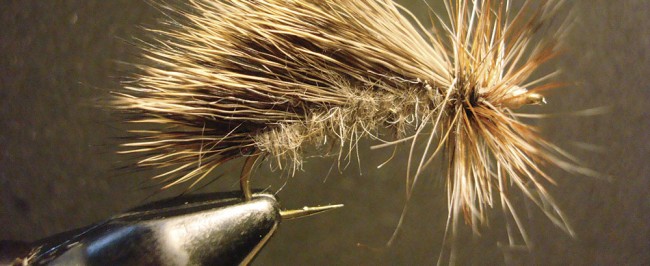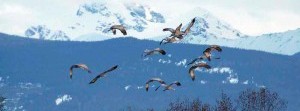
Photo Credit: Brian Smith
On the Fly: Still-water caddis, anyone?
I think the ultimate challenge and satisfaction for a still-water or lake fly fisher is to bring a large trout to the surface and to capture it with a floating fly. For the angler, this climax is a culmination of several factors: the right choice of fly, the correct time of day and year, and having the good fortune and experience to be in the precise spot on the lake where the action can take place.
Trout have a difficult time refusing a well-presented caddisfly. Despite aquatic research and estimates by many fly-fishing experts that a trout’s diet consists of only four percent caddis or sedge flies, and much of that diet will consist of sub-surface larvae and pupal stages, my favourable experiences with top-water caddisflies tell me that trout relish them throughout the fishing season, even when they are not present in the form of a hatching insect. Trout are opportunists, and nothing affords a better chance for a large meal than a big, juicy caddisfly flittering on a lake’s surface.
My still-water caddis imitation is a knockoff that began by looking at pioneer fly-fisher Art Mikulak’s pattern and re-designing it to my personal fancies over a period of 30 or 40 years. For the past 10 years, I have settled on what I call my Caddis Mikulak pattern, and it has graciously rewarded me with many glorious fishing days.
I fish my pattern beginning in late May about a month after ice-off and will continue to fish it through the summer months into late October. The key to success with a floating caddisfly is to find fish that are happy, indicated by trout that are moving and rising on the surface. The time of day is important, with low light conditions of early morning and evening best, but not as crucial as finding areas of visible activity at any time of day. Concentrate your efforts on the shoals of a lake, looking for long shelves of structure and weeds from two to 12 feet deep with a drop-off that continues into the lake. Trout enjoy a habitat that affords them deep shelter from bird prey, but will circle onto a shallow shoal to feed on emerging insects and to forage on crustaceans and larva that form the majority of their diets.
My favourite caddis lakes in the North are Tory, Wicheeda and Dragon. There is nothing more satisfying to me than casting a long line and Caddis Mikulak to their shoals or to a rising or cruising trout and letting it sit for a minute or two, then, if refused, giving it a twitch or skitter to mimic an escaping insect and having it slaughtered by an unsuspecting bruiser of a trout.
Brian’s Caddis Mikulak
Hook: Tiemco 2312 nos. 8-10
Thread: UTC 140 tan
Tail: deer hairs ½ body length
Body: dubbing, Haretron HET2 dark hare’s ear; two turns between stacks of wings
Wings: 4 stacks of deer hairs, between body dubbings
Hackle: 1 grizzly, 1 brown, three turns of each
Tying tips: Use less deer hair than you think; a five-mm width is plenty. Use strong tying thread or mono and to keep the deer hair wings from flaring use a soft-but-firm loop to begin and then tighten progressively harder to really tight, otherwise it will spin on you.




